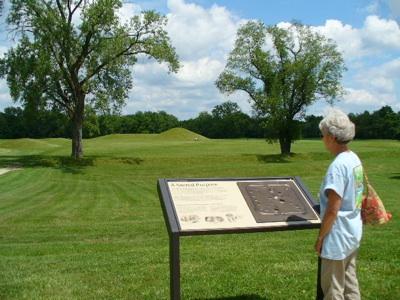Editor's note: Having driven the Blue Ridge Parkway and through Shenandoah National Park, our lodging experts, David and Kay Scott, are moving west on their 2010 odyssey across the National Park System. Early this week they were able to visit the Lincoln Home National Historic Site. In this dispatch, they bring us up-to-date with their travels.
Our departure last Wednesday from Shenandoah National Park was shrouded in thick fog. In fact, the fog was so thick that we ended up in a parking lot when we turned on what we thought was the road out of the park.
We had left the fog behind when we stopped at park headquarters to visit with concessions manager Chris Jones. It turns out that the Shenandoah contract held by ARAMARK Parks and Destinations expired in 2004 and is being renewed with the concessionaire on an annual basis until a new proposal is ready, hopefully by this fall. The current contract specifies a 2 percent franchise fee plus a 3 percent maintenance reserve.
Our first night out of Shenandoah was spent tenting in a nice West Virginia state park just east of Parkersburg. Traveling west on U.S. 50, we stopped in Chillicothe, Ohio, to visit Hopewell Culture National Historical Park, a Park Service unit that welcomes from 30,000 to 40,000 visitors annually. The park preserves and interprets mounds and earthworks constructed approximately 2,000 years ago over much of the eastern United States. The park visitor center, north of Chillicothe, is in one of five areas included in the historical park. The small VC has exhibits and offers an excellent 17-minute video presentation. Trails from the visitor center lead a short distance to the mounds located in this unit of the park. Two of the four other areas are open to visitors.
From Chillicothe it was onward to the 50th high school reunion, where classmates discussed medications, hip replacements, and various other physical and mental ailments. Fifty-four of our 95-member class returned for the reunion.
Driving west on U.S. 36 took us to Springfield, Illinois, home of Lincoln Home National Historic Site. President Lincoln’s home, the only one he ever owned, is open for guided tours. Tickets available in the visitor center without charge are required for tours that typically last 20 to 25 minutes.
The Park Service also offers guided walks through the neighborhood that appears much as it did during Lincoln’s 17-year residence in the home before leaving for Washington. Several blocks away is the old capitol in which President Lincoln gave his famous House Divided Speech. This is also the building where the future president did much of his work and argued 411 cases before the Illinois Supreme Court. His body laid in state in the state capitol following his assassination.
We found the 40- to 45-minute guided tour of the old capitol to be exceptional. The capitol is owned and managed by the state of Illinois, rather than the National Park Service. The state also owns President Lincoln’s nearby law office that is open to visitors. Lincoln Depot, where the president-elect departed from Springfield for Washington, is a short walk from the former president’s home. This building is owned and managed by the State Journal-Register.
Plan on half a day to tour the site, the old capitol, and the train depot. Living history programs are offered from mid-June to mid-August. This is the time to visit. Lincoln’s Tomb in Oak Ridge Cemetery is a short drive from downtown Springfield.
We were scheduled to be back on the road Tuesday to continue traveling west on U.S. 36. We will stop at Mark Twin’s hometown of Hannibal, Missouri, before crossing to St. Joseph on the opposite site of the state. We are guessing it will be two or three days before we get to St. Joseph to begin tracing the Oregon Trail. Look for us then.
David and Kay Scott are regular contributors to the Traveler. Their book, The Complete Guide to the National Park Lodges was first published by the Globe Pequot Press in 1997 and is now in its sixth edition.




Add comment